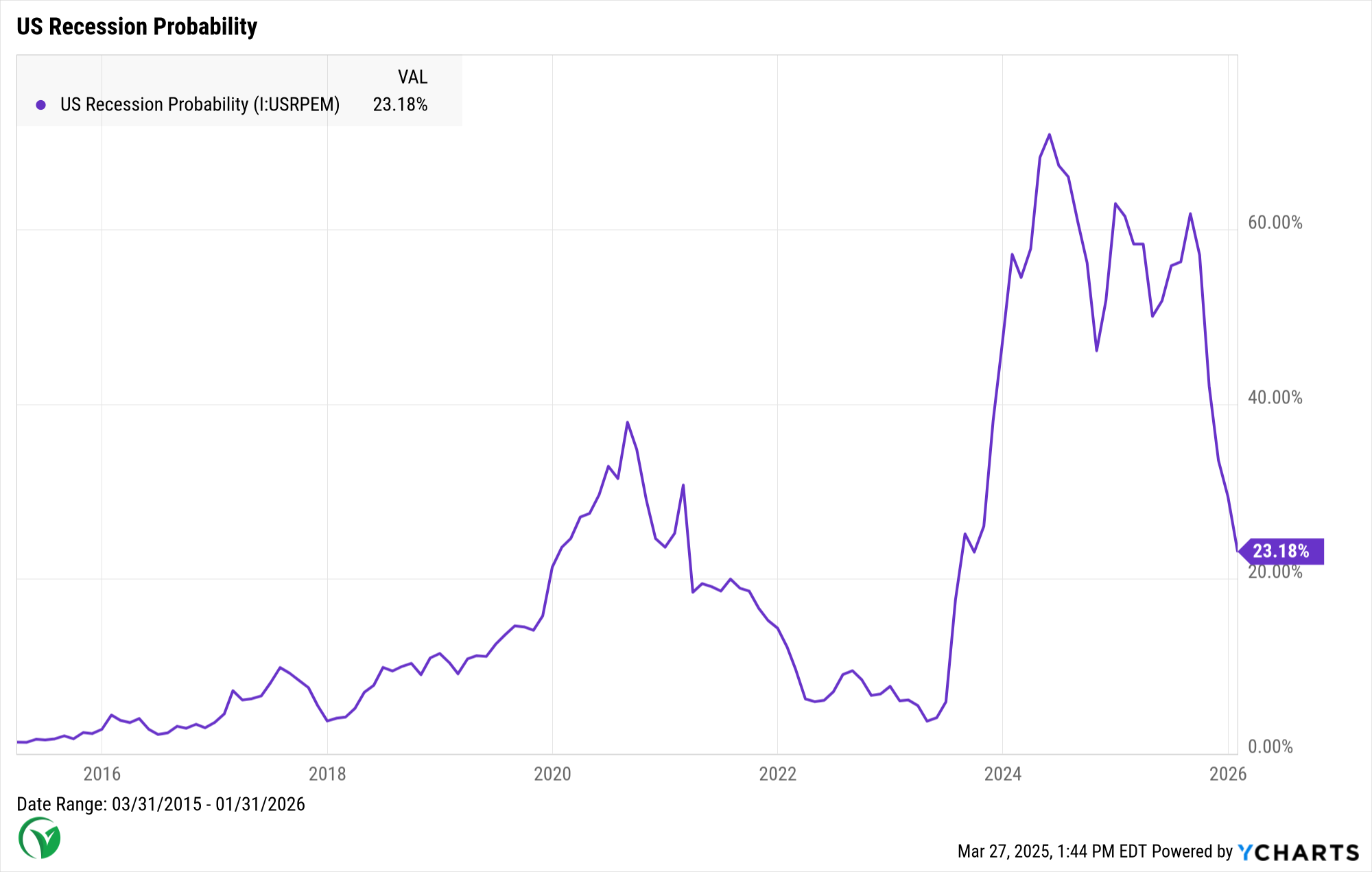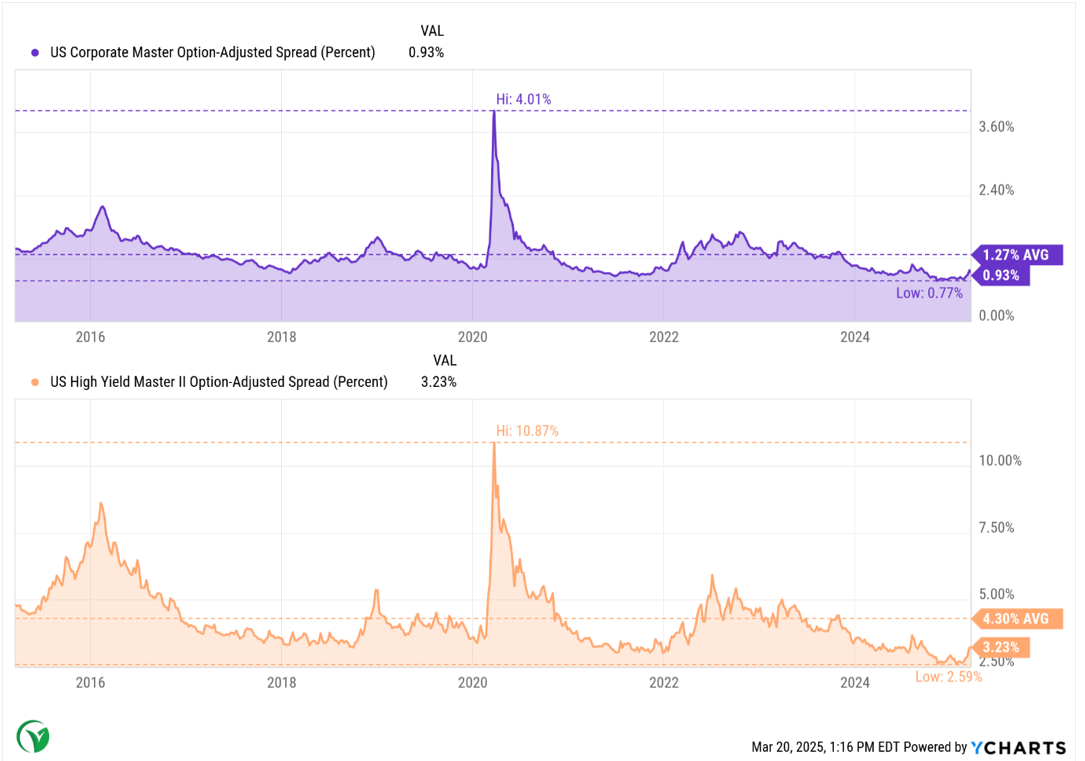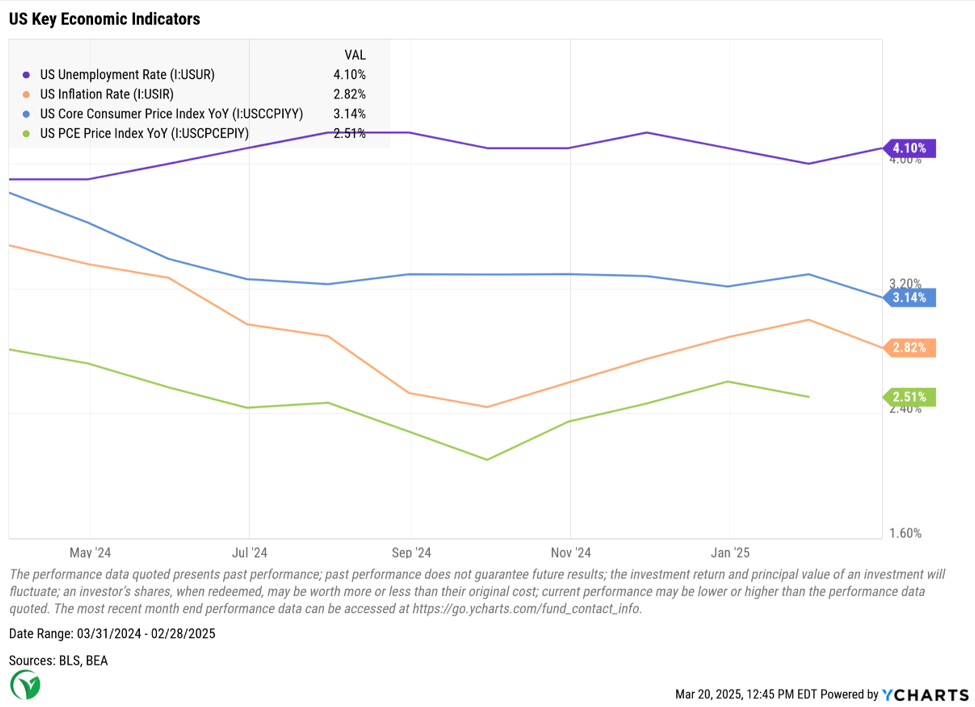
Key points in this commentary include the impact of new tariffs on various sectors, the probability of a recession based on current economic indicators, and the labor market’s performance in terms of job growth and unemployment rates. We also delve into market volatility, analyzing investor sentiment and credit spreads, and provide updated investment strategies to navigate these challenges. Our analysis aims to equip investors with the knowledge needed to make informed decisions in a complex and evolving economic environment.

Vita Financial
Investment Committee and
Private Wealth Group
Tariffs – An Unnecessary Necessity?
The resurgence of tariff-based trade policies under the Trump administration in 2025 has introduced a significant degree of economic uncertainty, particularly in relation to trade balance, inflation, and GDP growth. With a 25% tariff imposed on all steel and aluminum imports—including those from Canada, Mexico, and the European Union—and an increase in tariffs on all Chinese imports from 10% to 20%, businesses and investors face a more complex economic environment. Additionally, a 25% tariff on Canadian and Mexican goods was enacted on March 4, 2025, though a temporary exemption was granted for USMCA-compliant goods until April 2, 2025. Non-USMCA compliant imports, such as Canadian energy resources and potash, remain subject to a 10% tariff.
The widening US trade deficit, which reached a record $131.4 billion in January 2025, raises concerns about the efficacy of these policies in achieving trade rebalancing objectives. In the fourth quarter of 2024, real GDP grew at an annualized rate of 2.3%, primarily fueled by consumer and government spending. However, business investment declined, reflecting mounting concerns about economic policy uncertainty. Projections indicate that if all proposed tariffs are implemented, long-term GDP levels could decline by as much as 1.6%. Sectors heavily reliant on imported metals, such as construction and automotive manufacturing, are likely to experience increased production costs, potentially leading to slower expansion and employment contractions.
The manufacturing sector faces mixed outcomes under these tariffs. While domestic steel and aluminum producers could benefit from reduced foreign competition, industries dependent on these raw materials may see higher costs, leading to a decline in output and profitability. Similarly, the agricultural sector is highly exposed to trade tensions, with retaliatory tariffs from Canada, Mexico, and China threatening US agricultural exports. Key products such as soybeans, dairy, and meat may face declining international demand, adversely impacting farm incomes and supply chains. Additionally, higher costs for imported fertilizers and equipment could increase financial stress within the sector.
Recession Talks – Light at the End of the Tunnel
As of March 2025, the probability of a U.S. recession remains elevated but lower than historic peaks observed in 2022 and 2023. Goldman Sachs estimates a 20% chance of recession, while J.P. Morgan has increased its projection to 40%, reflecting concerns over trade policies and financial tightening. The Federal Reserve Bank of New York’s model indicates a 23.18% recession probability, down from 29.40% last month and significantly lower than 61.47% a year ago, yet still above the long-term average of 15.10%. Additionally, the yield curve inversion—a traditional recession indicator—shows a 27% probability of contraction, higher than last month but below levels seen in past recessions. Despite these signals, key economic metrics such as employment and corporate earnings remain robust, preventing a consensus on an imminent recession.
Market volatility persists amid these uncertainties. The CBOE Volatility Index (VIX) is currently at 21.70, surpassing its 10-year average of 18.30, indicating heightened investor caution. Consumer spending shows signs of moderation, with retail sales growth decelerating to 2.1% year-over-year from 3.5% in December 2024. The credit spread between high-yield and investment-grade bonds stands at 3.25%, below the long-term average of 5.50%, and significantly lower than levels during previous economic downturns—8.49% in March 2024, 10.87% in March 2020, and 6.00% in March 2000. This compression suggests relative investor confidence but also warrants caution, as tighter spreads reduce compensation for credit risk. Given these conditions, while the likelihood of a full-blown recession remains relatively low, market volatility persists. As we recommended at the start of the year in our January 2025 Market Commentary , our Investors may consider a conservative portfolio approach, favoring a 60/40 allocation with a tilt toward high-quality bonds and fundamentally strong equities that can withstand economic turbulence.


Labor Market Outlook – Impact on Payroll and Unemployment
The U.S. labor market presented a mixed picture in February. The unemployment rate saw a slight increase to 4.1%, up from 4.0% in January, unexpectedly rising above market expectations. Despite this uptick in joblessness, non-farm payrolls showed a positive trend, with 151,000 jobs added, exceeding the revised figure of 125,000 from the previous month, although falling slightly short of economists’ forecasts. The labor force participation rate remained largely stable at 62.4%, indicating a consistent level of engagement in the job market. Notably, job growth was concentrated in sectors such as health care, financial activities, and transportation and warehousing, while federal government employment experienced a decline. Average hourly earnings continued their upward trend, increasing by 0.3% over the month, translating to a healthy 4.0% gain on a year-over-year basis. While the unemployment rate has remained within a tight range since May 2024, the unexpected rise in February, coupled with the slightly underperforming payroll growth compared to expectations, suggests that the labor market’s resilience is being closely watched for any signs of softening amidst broader economic uncertainties

Moving Forward – Reiterating Outlook
We would reiterate our initial stance on a conservative 60/40 approach and investing beyond the Magnificent 7 as a prudent strategy in 2025, as highlighted in our follow up in February 2025 Market Commentary. The S&P 500’s recent decline of -2.68% reinforces the importance of diversification and balance, bringing to light the resilience of this approach amid market volatility. Higher bond yields, with 10-year Treasuries around 4.55% and corporate bonds offering 6-8%, provide stability and attractive returns. Meanwhile, our strategy to look beyond the tech-heavy Magnificent 7 has proven effective through the first quarter. Tariffs, geopolitical risks, and DOGE’s cost-cutting measures reinforce the need for sector diversification, with AI, energy, financials, and defense outperforming. Cyclicals and financials continue to gain traction, strengthening portfolio resilience. A balanced 60/40 approach, combined with tactical allocations in emerging sectors, remains well-positioned to navigate macroeconomic uncertainties and deliver long-term growth in 2025’s evolving landscape.
Key Market Indices





*Market Indices as of 3/31/2025
This is intended for informational purposes only and should not be used as the primary basis for an investment decision. Consult a financial professional for your personal situation.
Past performance does not guarantee future results. Indices mentioned are unmanaged, do not incur fees, and cannot be invested into directly.
Graphs provided by YCharts.
Key Market Indices according to Google Finance.
Securities offered through Registered Representatives of Cambridge Investment Research, Inc., a broker/dealer, member FINRA/SIPC. Advisory services through Cambridge Investment Research Advisors, Inc., a Registered Investment Advisor. Cambridge and Vita Financial are not affiliated. The information in this email is confidential and is intended solely for the addressee. If you are not the intended addressee and have received this email in error, please reply to the sender to inform them of this fact. We cannot accept trade orders through email. Important letters, email, or fax messages should be confirmed by calling (678) 250-5099. This email service may not be monitored every day, or after normal business hours.
